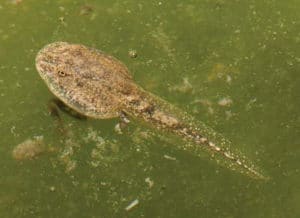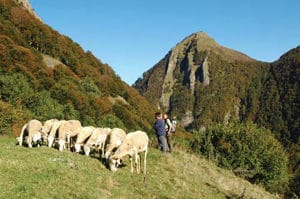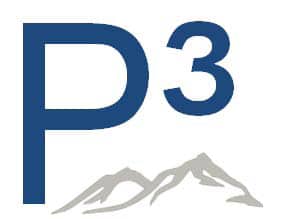
Trouble in Paradise
 Figure 1. Lake Acherito (Ibon Acherito) on the Spanish side of the Pyrenees. The lake harbors several amphibian species, including the endemic Calotriton asper. It is located at 1900 m elevation, and is the first site in the Pyrenees for which Bd was reported.
Figure 1. Lake Acherito (Ibon Acherito) on the Spanish side of the Pyrenees. The lake harbors several amphibian species, including the endemic Calotriton asper. It is located at 1900 m elevation, and is the first site in the Pyrenees for which Bd was reported.
We just had arrived in the French Pyrenees. The beauty of the Pyrenees was stunning, somehow reminiscent of the mighty Canadian Rockies in its wildness and remoteness. We marveled at the sharp peaks, clear waters and wonderfully green vegetation, and pondered the multitude of research threads we could explore in such a setting. As we discussed our priorities, a colleague mentioned Batrachochytrium dendrobatidis. This unpronounceable jumble of letters represents one of the most devastating amphibian diseases, and perhaps the single biggest threat to frogs, toads and salamanders. Bd, our colleague told us, had taken hold in the beautiful mountain watersheds of the Basque country and was killing off amphibians at a frightening rate (Fig. 1).
Bd, luckily referred to by its abbreviation, is also known as amphibian chytrid fungus. You’ve probably heard of it: it’s responsible for amphibian declines all over the world and extinctions of up to 120 species. Since 2008, we’ve spent many, many months rummaging around the Pyrenees in search of amphibians, marveling at their diversity on the one side and the devastation we found on the other (Fig. 2). After having visited 80 plus lakes and their proximal ponds and pools over almost the full range of the Pyrenees, we’ve started to see patterns in the distribution of Bd.
East, West and Central: Patterns in Bd Distributions
 Figure 2. The Bassies watershed in the Pyrenees of the Ariege at 1650 m elevation. It is home to newts, toads, frogs and many other freshwater species, and consists of a multitude of water bodies of different sizes. The largest water bodies, however, are artificial reservoirs for hydroelectric power plants.
Figure 2. The Bassies watershed in the Pyrenees of the Ariege at 1650 m elevation. It is home to newts, toads, frogs and many other freshwater species, and consists of a multitude of water bodies of different sizes. The largest water bodies, however, are artificial reservoirs for hydroelectric power plants.
In the eastern Pyrenees, the Mediterranean influence is quite obvious: granite outcrops, sparse vegetation, trees with needles rather than leaves, bright, clear lakes and rivers. To the west, the Pyrenees are characterized by red limestone, leafy trees and darker, even reddish water bodies. The Pyrenees in the center, especially in the department Ariege, are dominated by oak trees and much denser vegetation due to more frequent precipitation events. Was it a coincidence that we never found Bd in Ariege, but only in the rockier limestone regions to the west? Could it be that something in the water hampers the establishment of this devastating amphibian pathogen?
The theories began to y. Perhaps the vegetation released some sort of natural protection. Or maybe the local climate conditions somehow inhibit Bd, or the chemical composition of the surrounding geology. Maybe amphibians in the central Pyrenees have somehow built up a natural resistance, or perhaps Bd has
some sort of natural predator that only lives in this region (Fig. 3). As a scientist, though, you don’t just think of reasons why, you think of ways to test your ideas. And so we started running experiments, many of them.
What Stops Bd?
 Figure 3. An Alytes obstetricans (midwife toad) tadpole metamorphing (ca. Gosner stage 39) in a highly eutrophic lake in the Pyrenean
Figure 3. An Alytes obstetricans (midwife toad) tadpole metamorphing (ca. Gosner stage 39) in a highly eutrophic lake in the Pyrenean
Mountains. In altitudinal populations, midwife toad tadpoles can overwinter over several years before becoming small toadlets.
In a first set of experiments, we found that water from uninfected lakes reduced cultured zoospores much faster than water from infected lakes, but that this effect vanished when we filtered the water. This told us that it wasn’t the chemicals in the water that prevented Bd growth, but something else. We then heated the water, and found that it had a similar effect to ltration. Whatever caused the rapid decline in Bd zoospores must therefore be alive.
So we set up a range of experiments using tiny zooplankton… and hit the jackpot. We were able to establish that zooplankton were preying on Bd zoospores, protecting amphibians from infection (see References). That was a fantastic find, and a definite milestone in understanding how chytridiomycosis might
be stopped (Fig. 4).
 Figure 4. Alona guttata, an example of Bd-eating zooplankton.
Figure 4. Alona guttata, an example of Bd-eating zooplankton.
For better or worse, however, zooplankton itself is sensitive to many environmental impacts. For example, the excrement of livestock can introduce an excess of nutrients to the water, or zooplankton can be eaten by introduced fish (fish don’t occur naturally in mountain lakes!). Climate change and direct or indirect pollution from heavy metals, trace elements or organic pollutants coming from pesticide use can also impact on the diversity and density of zooplankton. Hence, a change in the environment in which zooplankton live will very likely be reflected by the composition, density and dynamics of the zooplankton community. A healthy, undisturbed ecosystem is likely to harbor a greater number of zooplankton species in higher densities than a disturbed, polluted system.
New Research Directions
 Figure 5. The Pyrenees have been traditionally used for grazing live stock. Here, we were discussing grazing with a shepherd at the Chapelle d’Isard in the Pyrénées Ariégeoises.
Figure 5. The Pyrenees have been traditionally used for grazing live stock. Here, we were discussing grazing with a shepherd at the Chapelle d’Isard in the Pyrénées Ariégeoises.
These were the ideas that led up to the newly funded project, People, Pollution, and Pathogens (www.p3mountains.org). The negative impacts of global change on mountain freshwater ecosystems and their biota are expected to greatly outweigh any potential benefits. Although mountains are often thought of
as untouched landscapes, far from pollution and other human impacts, the truth is that they are highly vulnerable and face multiple threats from climate change, human impacts and other sources. The goal of People, Pollution, and Pathogens is to understand these threats, and our options for controlling them.
PEOPLE: Humans have exploited the timber, mining and pasturage resources of mountain environments for millennia. These activities and others have impacted mountain ecosystems to varying degrees. Today, the rapid flux of people and resources into and out of mountains compounds the challenges facing mountains.
POLLUTION: Human activities, even those carried out far from mountains, pollute pristine mountain areas at high altitudes. Potentially harmful chemicals can be transported to mountains by orographic effects and may enrich in lake sediments and peat bogs. Habitat destruction can therefore lead to profound
disturbances in entire mountain ecosystems with strong impacts on human society.
PATHOGENS: Food webs in destabilized mountain ecosystems can be strongly altered, as illustrated by the zooplankton example above. Such changes can result in the introduction of, and increased vulnerability to, pathogens affecting both humans and wildlife, such as diarrheic diseases.
The P project will conduct ecological research and policy relevant actions on pollution, pathogens and anthropological impacts in mountain ecosystems, especially at the interface of aquatic and terrestrial habitats and in the socio-ecological system. The research will be conducted in four mountain ranges: the Pyrenees (France), Dhofar Mountains (Oman), Sierra Nevada (USA) and the Great Hinggan Mountain (China). In a first step, P will develop a common database and collect data on pollution and pathogens in the socioecological context along gradients, then use this data to model different biotic and abiotic parameters. Based on historical and newly collected data, P will develop dynamic indicators and essential biodiversity variables relevant for the mountain context to facilitate the engagement
with the general public, stakeholders and policymakers.
The P consortium has already started to roam the different mountain ranges and is getting ready for an extensive field season in 2017. We will be talking to local authorities and all the hikers we meet on our way (Fig. 5)— maybe you will be one of them!
All photos by Dirk SchmellerAuthor: Dirk Schmeller, Helmholtz -Center for Environmental Research, Leipzig, Germany
Project partners:
Gael Le Roux1, Vance Vredenburg2, and Ji Shen3
1Paul Sbatier University, National Center for Scienti c Research, Paris, France;
2San Francisco State University, San Francisco, USA;
3Nanjing Institute of Geography and Limnology, Nanjing, China
References:
Online articles about zooplankton predation on Bd zoospores:
http://www.scienti camerican.com/article/fungus-chompingmicro-predators-could-protect-amphibians-from-decimating-skindisease/http://grist.org/climate-energy/can-a-hungry-microbehelp-us-turn-back-the-clock-on-extinction/?utm_source=syndication&utm_medium=rss&utm_campaign=feedhttp://colorado.icito.com/biodiversity-natural-micropredatorskey-to-controlling-frog-killing-chytrid-pathogen/


